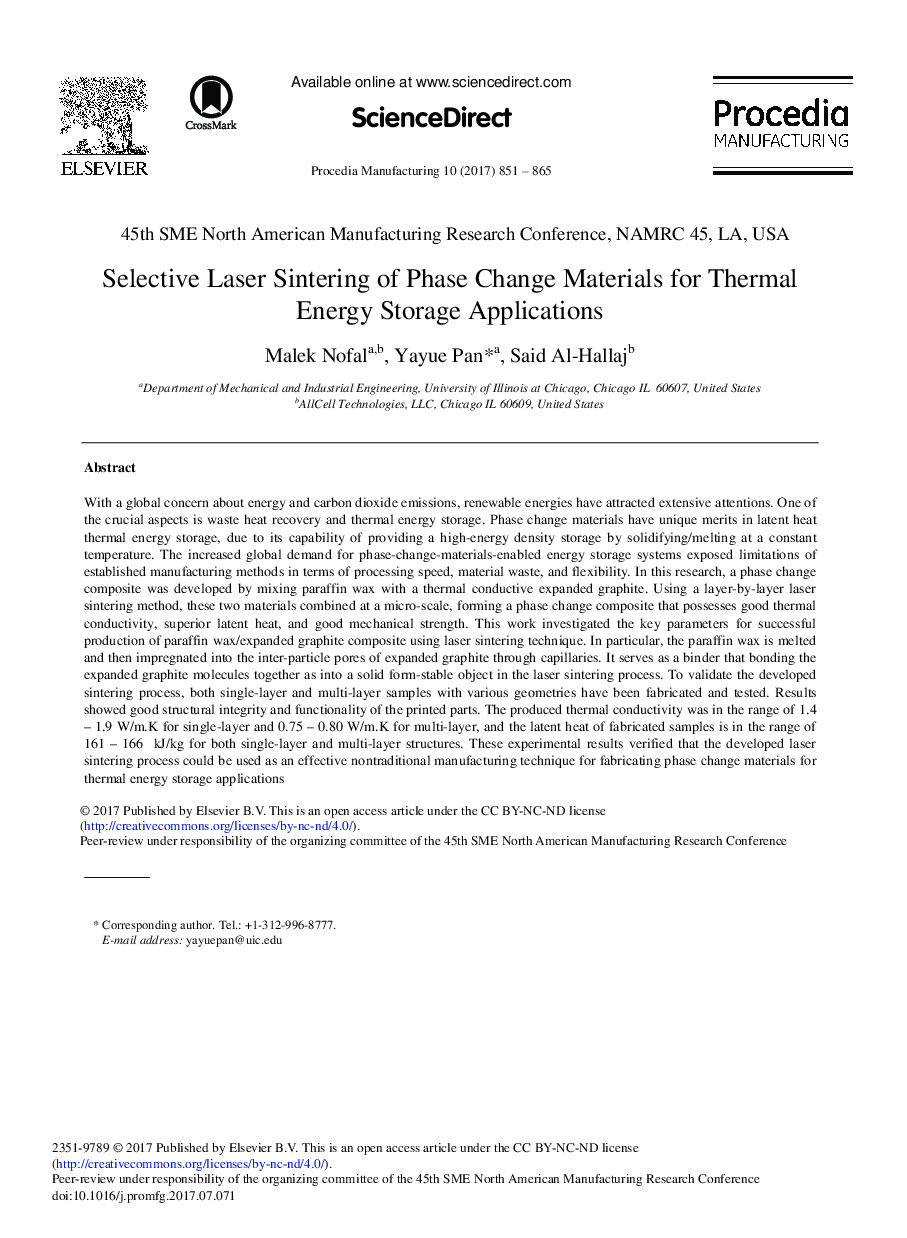| Article ID | Journal | Published Year | Pages | File Type |
|---|---|---|---|---|
| 5128829 | Procedia Manufacturing | 2017 | 15 Pages |
With a global concern about energy and carbon dioxide emissions, renewable energies have attracted extensive attentions. One of the crucial aspects is waste heat recovery and thermal energy storage. Phase change materials have unique merits in latent heat thermal energy storage, due to its capability of providing a high-energy density storage by solidifying/melting at a constant temperature. The increased global demand for phase-change-materials-enabled energy storage systems exposed limitations of established manufacturing methods in terms of processing speed, material waste, and flexibility. In this research, a phase change composite was developed by mixing paraffin wax with a thermal conductive expanded graphite. Using a layer-by-layer laser sintering method, these two materials combined at a micro-scale, forming a phase change composite that possesses good thermal conductivity, superior latent heat, and good mechanical strength. This work investigated the key parameters for successful production of paraffin wax/expanded graphite composite using laser sintering technique. In particular, the paraffin wax is melted and then impregnated into the inter-particle pores of expanded graphite through capillaries. It serves as a binder that bonding the expanded graphite molecules together as into a solid form-stable object in the laser sintering process. To validate the developed sintering process, both single-layer and multi-layer samples with various geometries have been fabricated and tested. Results showed good structural integrity and functionality of the printed parts. The produced thermal conductivity was in the range of 1.4 - 1.9Â W/m.K for single-layer and 0.75 - 0.80Â W/m.K for multi-layer, and the latent heat of fabricated samples is in the range of 161 - 166Â kJ/kg for both single-layer and multi-layer structures. These experimental results verified that the developed laser sintering process could be used as an effective nontraditional manufacturing technique for fabricating phase change materials for thermal energy storage applications
